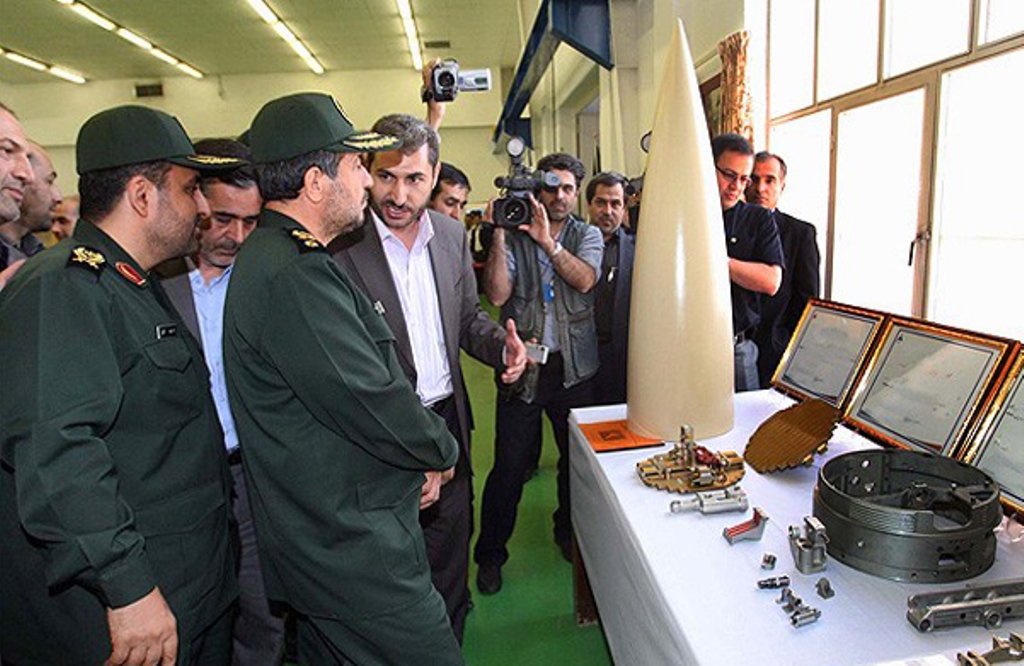Hack-Hook
ELITE MEMBER

- Joined
- Jan 11, 2012
- Messages
- 19,358
- Reaction score
- 3
- Country
- Location
the problem is you cant see its an upgraded MIM-23 in the Shell of AIM-54....
Study the thread ???? What's there to study..... You were successfully able to copy the AIM which was given to you by the US in 70s.... you added a small strap at the sides for Maybe maneuverability.... Successfully managed to screw up the range and Yes the Speed remains to be the same as Mac5.... Ok I'm a Child...... But you grownup can't see the difference......
Oh please the guidance system ??? ofcourse you can;t have the US one so you added your own which again most probably clone of the US or USSR ones
and about copy of USA or Russia seeker
yeah pretty much look the same
Original MIM-23

Shalamcheh missile

Shahin Missile

yeah they are practically one on one copy of each other
Fakour-90 its something that they named as Maqsoud in this unveiling and will be announced laterhttp://militarywatchmagazine.com/article/70790
Displaying six of the bulky 450kg indigenous platforms in ceremony, the Iranian military has announced that its Fakour-90 radar guided air to air missiles have been put into mass production. The missile bears a strong resemblance to the U.S. AIM-54 Phoenix, which at the time of its entry into service in 1974 was the longest missile of its kind in the world and for which the Imperial Iranian Air Force was the only foreign client. Following the Islamic Revolution of 1979 and Tehran’s sharp pivot away from the Western Bloc, the Iranian military undertook extensive efforts to develop the parts to service its U.S. made aircraft domestically - the most difficult of which was the F-14 Tomcat heavy air superiority fighter which deployed the Phoenix missiles. Alongside developing indigenous capabilities to service the Tomcats, Iran has also gone to great lengths to develop a missile capable of replacing the Phoenix - sending an AIM-54 and according to some reports an entire F-14 fighter to the Soviet Union for study in exchange for assistance in developing such a missile. With the USSR operating the highly similar R-33 missile, a platform with an original range of 120km which was gradually enhanced and given superior fuel composites to gain a 300km range, Moscow was well placed to aid its new partner in developing an indigenous variant of the AIM-54 as relations between the two countries improved and a strong defence partnership developed from the late 1980s.
The Fakour-90 not only matches the capabilities of the AIM-54, but improves on them considerably - with Iranian sources putting the range at 300km and Western experts estimating a range of around 220km - compared to the original platform’s 180km range. Like the original platform, the Fakour-90 retains a guidance system capable of providing a radar lock independently of the launch aircraft’s own radar - a key capability lacked by modern Western combat aircraft and most of those fielded by Russia which makes Iran’s F-14 fleet potentially highly lethal in beyond visual range engagements. According to Iranian Defence Minister Amir Hatami, who attended the ceremony for the beginning of mass production of the new missile, the platform its set to be used by a variety of aircraft - indicating that aircraft other than the F-14 will for the first time be equipped with the Fakour-90. With the F-14 serving as the only high end air superiority fighter or interceptor in the Iranian military, should other aircraft be equipped with the missiles they will almost certainly deploy them in smaller numbers. Iran’s indigenous Saeqeh twin engine fighter is a leading candidate for deployment of the missiles, though its limited payload means it is unlikely to deploy more than two compared to the F-14's six.
The Fakour 90 remains the longest ranged air to air missile produced by any country other than Russia which is currently in active service - representing one of the most considerable and unique assets of the Iranian military and among the greatest threats to hostile aircraft in its airspace and well beyond. Traveling at over Mach 5 and striking with the same degree of precision if not higher than the AIM-54 did, the missile can target enemy fighters well beyond their retaliation range and provides an excellent complement to the country’s surface to air missile network relied on for the bulk of the country’s anti aircraft capabilities. Indeed, Fakour-90 equipped F-14 fighters, and possibly other jets armed with the missiles, may well represent the only outstanding asset in an otherwise highly mediocre air force.




 so you added a small strap there managed to reduce the range by 40KM
so you added a small strap there managed to reduce the range by 40KM 




